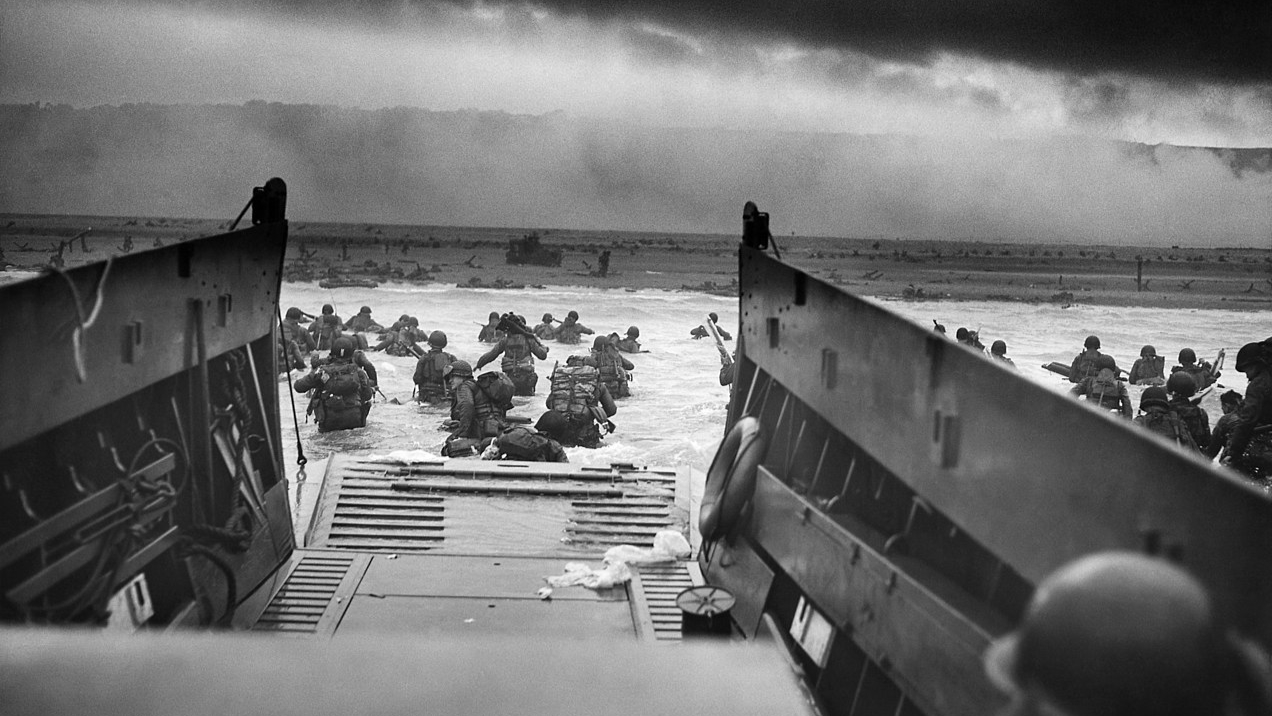Authors:
Historic Era: Era 8: The Great Depression and World War II (1929-1945)
Historic Theme:
Subject:
May/June 1994 | Volume 45, Issue 3


Authors:
Historic Era: Era 8: The Great Depression and World War II (1929-1945)
Historic Theme:
Subject:
May/June 1994 | Volume 45, Issue 3

A conjecture, worthy of a certainty, is that no American soldier on Omaha Beach at high noon, June 6, 1944, gave thought to being present at a turning point in world history. Any abstract thinking he may have done was more likely along the lines of being in a major debacle. The English Channel to his back, his weapons, fouled by saltwater and sand, he was largely naked before an enemy firing down from trenches and massive concrete bunkers along high bluffs looming to his immediate front. Fortunately for his mission, if of no comfort to his person, his allies invading Europe by sea and air along some fifty miles of less forbidding Normandy coast were in better straits.
Their battle is popularly known as D-Day. Their mission was to break through the German coastal defenses and secure a lodgment area in Normandy for the mustering of the armed might of the Western Allies, then assembled in England. This accomplished, they were to attack and destroy the German armies in Western Europe and, in concert with the forces of the Soviet Union, advancing from the east, invade Germany and destroy the Nazi regime that had held most of Europe in bondage and terror over the past five years.
This generalized American soldier’s lack of interest in history at the darkest moment of his travail is understandable. In the end, of course, he prevailed on Omaha and, with his allies, secured the lodgment. This done, the ultimate success of the mission became as much a given as war ever affords. Costly battles that followed in Normandy, at Arnhem, and in the Ardennes delayed but could not halt the Allied armies that continued to grow in strength, while those of their foes steadily eroded without hope of recovery. By any sort of reasoning, the D-Day victory was decisive to victory in Western Europe.
Now, 50 years later, a clearer perspective of this victory shows that it not only was decisive in a theater of operations of a long-ago war but can also be strongly argued as the decisive turning point in America’s long, hesitant march to the peak of power in a world of vast change in its every human aspect: political, social, economic. This perspective is supported by an abundance of recorded history. The battle and the blind avalanche of events leading to it are exhaustively documented. The half-century since is also minutely recorded; for many it is within living memory. For the first time, much of it has been under the electronic eye of television. Unfortunately—as with the written